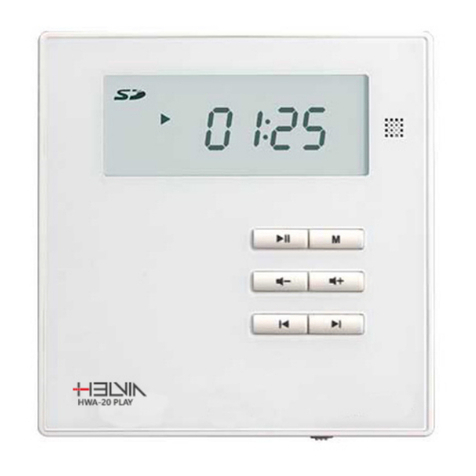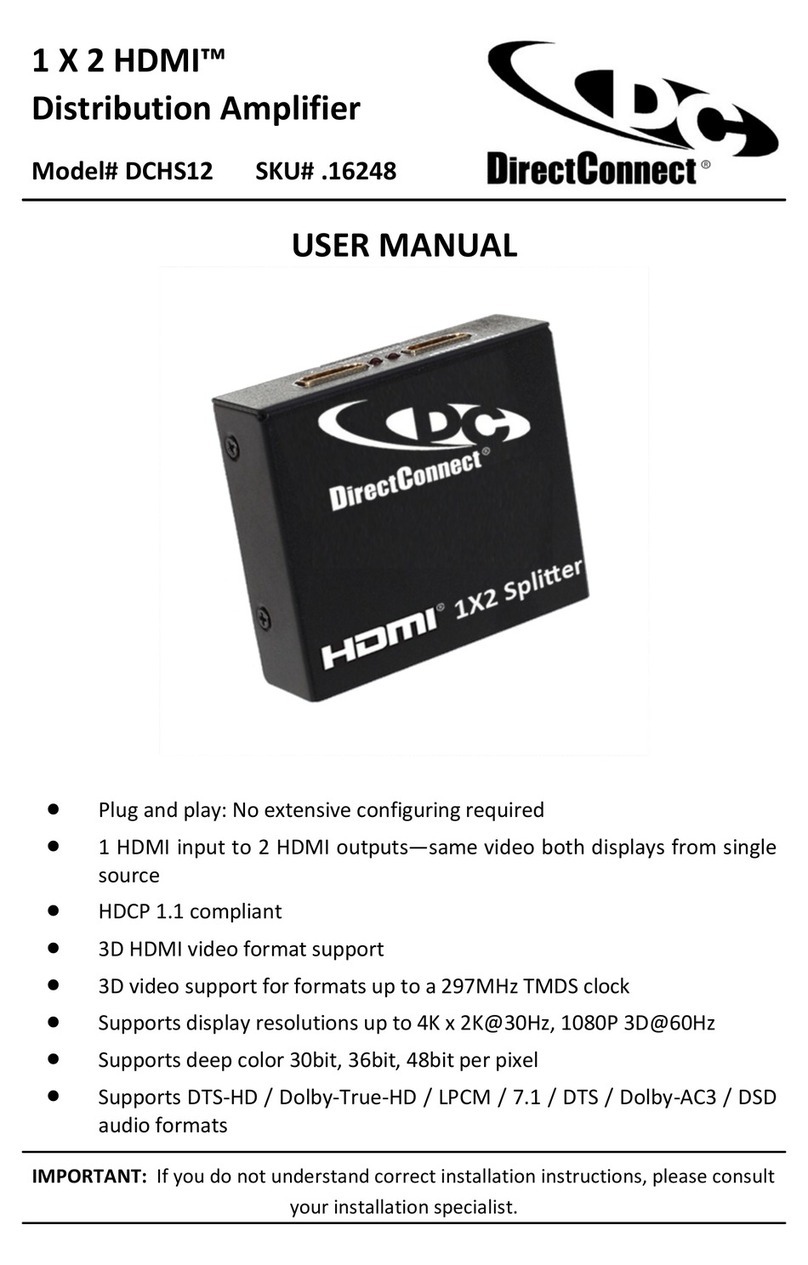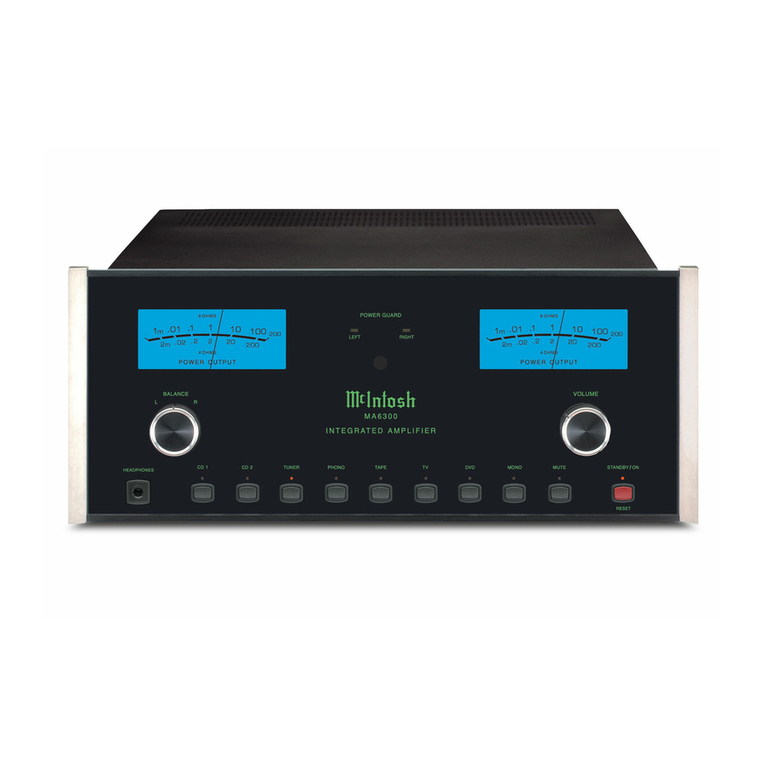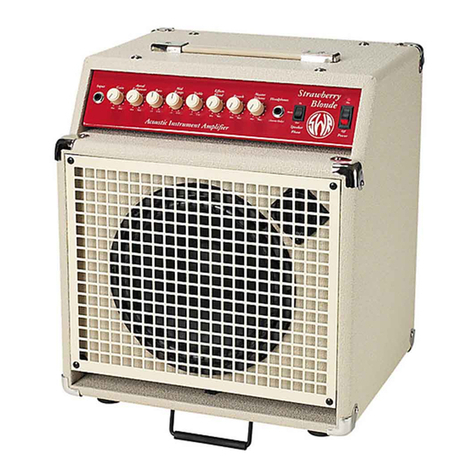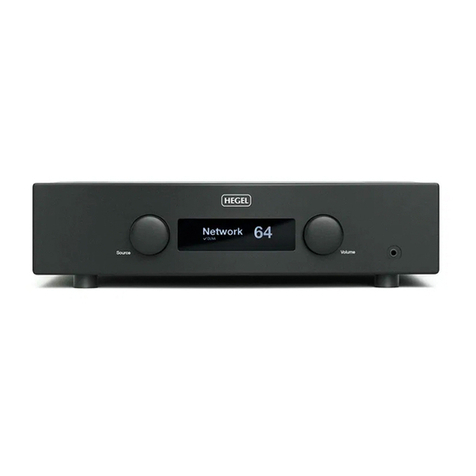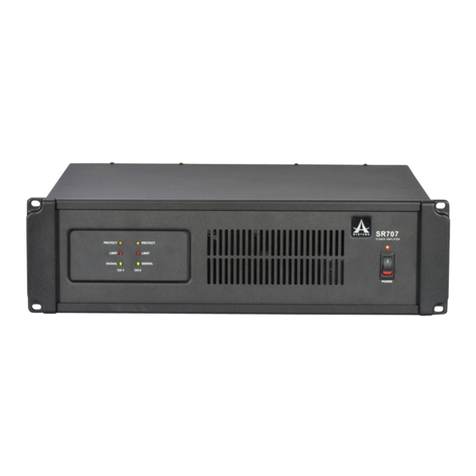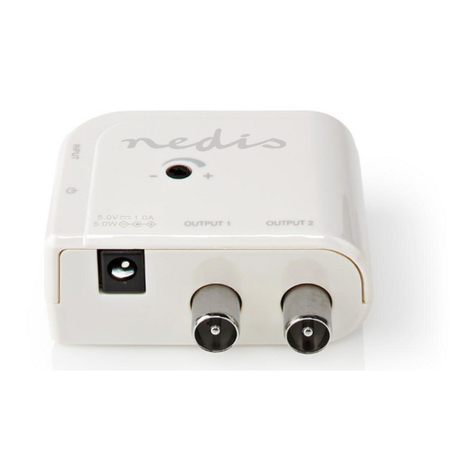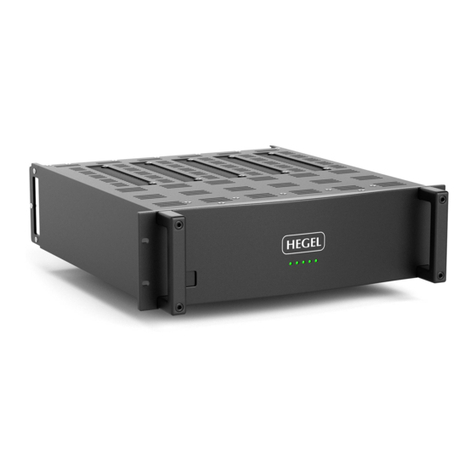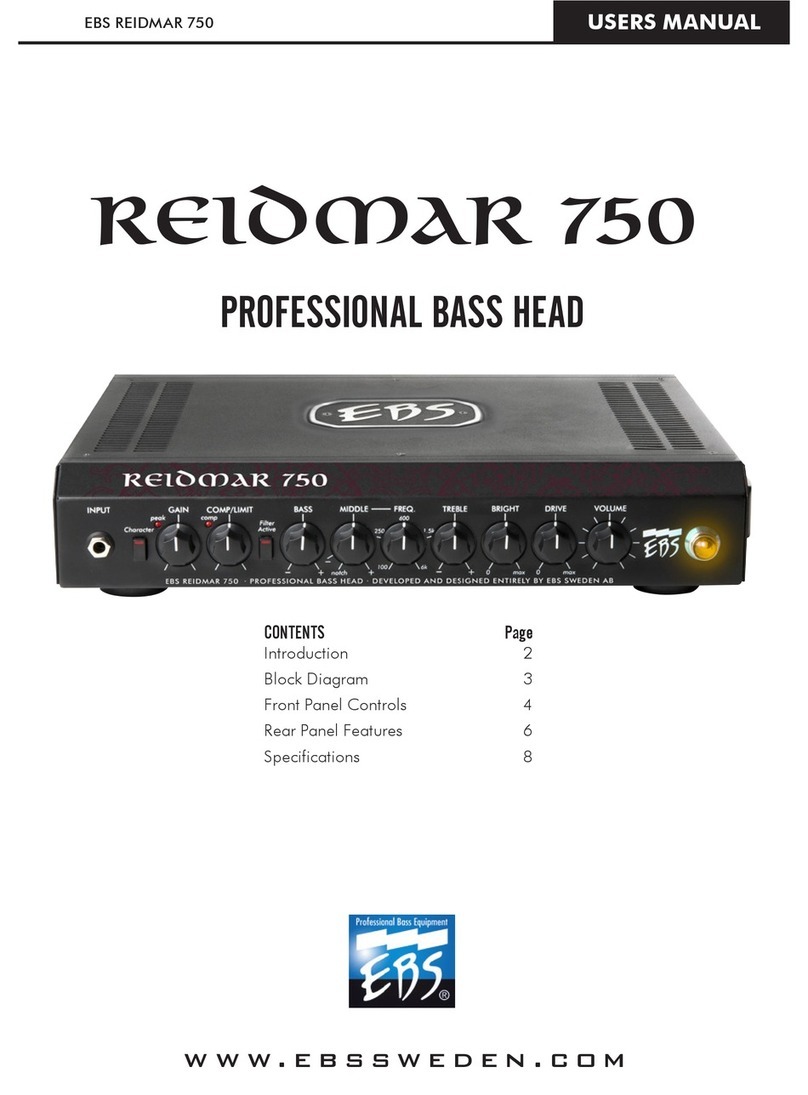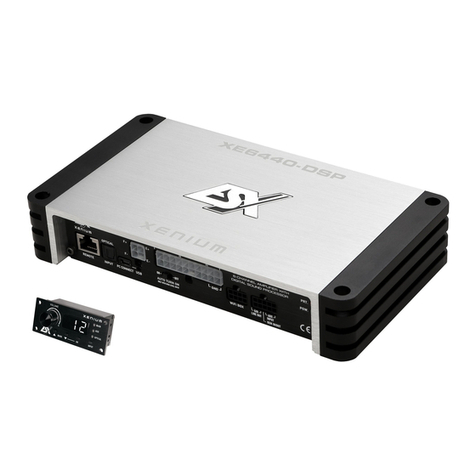Skye SKP 125 VS User manual

1 – 4 Channel External Amplifier
SKP 125 VS
Skye Instruments Lt .,
21 D ole Enterprise Park,
Llan rin o Wells,
Powys LD1 6DF UK
Tel: +44 (0) 1597 824811
www.skyeinstruments.com Iss. 1.1

Skye Instruments Ltd.
Skye Instruments is based in the UK and we are very proud to be celebrating being in business since
1983. ur products are designed and built in the UK. We have a very wide product base and our
sensors & systems are used for plant & crop research; micro-climate, global climate change studies;
environmental monitoring and controlled environment installations.
Products include light sensors & systems, weather monitoring sensors, automatic weather stations,
plant research systems, soil and water research systems.
Feel free to contact us via our e-mail, or any of the methods below:
Click on the icons to browse to the sites, or search for the usernames below.
Have a Smartphone? Scan this QR code to access our website for more information about your
product:
Please be aware that the information in this manual was correct at time of issue, and should be 100% relevant to
the accompanying product. We take great pride in our ever-evolving range of products, which means that sometimes
the product may change slightly due to re-design.
If you have any queries, please do not hesitate to contact our technical team by any of the methods above.
Skye.InstrumentsSkye Instruments Ltd. @SkyeInstruments SkyeInstrumentsVideo
Skye Instruments Ltd.

Page
1 INTRODUCTION 1
2 TYPICAL APPLICATION 2
2.1 Amplifier ......................... 2
3 WIRING & POWER DETAILS 3
3.1 Wiring ..............................3
3.2 Sensor Output & Power
Supply.............................4
3.3 Connecting to Terminal .... 5
4 HOUSING 6
5 SPECIFICATIONS 7
6 TROUBLESHOOTING 8
CONTENTS

1. INTRODUCTION
Thank you for purchasing a Skye Instruments External 1 to 4-channel Amplifier. This product may have
between 1 and 4 current output light sensors connected to it. This amplifier's function is to transform the current
from one of Skye Instruments' unamplified sensors into a voltage output, scaled over a desired range pre-
determined at the time of ordering (e.g. 0 – 2V, 0 – 5V, etc.).
Alternatively, just one or two sensors may be connected and scaled to different ranges on different
channels, so that two potential ranges of light can be accurately measured (e.g. this may be useful when the
maximum light levels are unknown, at the outset).
ur range of amplified sensors have the amplification is built into the sensor housing, which is the
ideal situation. This is a product for those situations where this is not appropriate (for example, where there is
a limitation on sensor height). The cable between an unamplified sensor and an amplifier should be as short
as possible and fixed down firmly.
Please Note:
REMOVE THE LID SLOWLY AND GENTLY AS THERE IS A WIRE ATTA HED TO IT THAT SERVES AS THE
S REENING ONNE TION FOR THE LID.
PLEASE ALSO ENSURE THAT ON REPLA ING THE LID THAT THE WIRE DOES NOT GET TRAPPED IN
THE SEALING LIP.
1
1 - 4 Channel External Amplifier

2. TYPICAL APPLICATION
2.1 Amplifier
The amplifier for each channel has had its level of amplification (gain) set at the time of manufacture
and is not user changeable.
Different sensors have different scaling / output voltage limits, This is due to the amount of gain that
we are able to apply, and these are evaluated at the time of ordering. Common scaling may be 1 volt = 10
of unit X, yet any desired range may be possible. e.g. 1.23 Volts = 567 unit X, depending on the application.
It is possible to have different channels providing different output ranges for a given sensor, but only
one range would be available at any one time. There is a maximum of four channels so one sensor may
have a maximum of four selectable ranges. For example, two sensors would have a maximum of two different
ranges for each sensor.
e.g. Channel 1 (e.g. PAR Quantum) 1 volt = 100 µmols
Channel 2 (e.g. PAR Quantum) 1 volt = 20,000 µmols
2
1 – 4 Channel External Amplifier
Up to 4x Channel input
Ch.1
Ch.2
Ch.3
Ch.4
4-Ch. External
Amplifier
Ch.1 Amp. Voltage
Ch.2 Amp. Voltage
Ch.3 Amp. Voltage
Ch.4 Amp. Voltage
Custom Voltage Output

3. WIRING & POWER DETAILS
3.1 Wiring
The terminal block is set up to send/receive signals in the following way:
Number Terminal Function Wire olour
1 Power supply positive Red
2 Power supply ground Blue/Black
3 utput signal ground Violet/Green
4 Channel 1 voltage output Brown
5 Channel 2 voltage output White
6 Channel 3 voltage output range
7 Channel 4 voltage output Yellow
8 Cable screen of output cable Grey
9 Sensor cable screens Grey
10 Sensor input grounds Green x 4
11 Channel 1 light sensor Input Blue Serial #……………..
12 Channel 2 light sensor Input Blue Serial #………………..
13 Channel 3 light sensor Input Blue Serial #………………..
14 Channel 4 light sensor Input Blue Serial #………………..
All Skye Instruments' current output light sensors are wired according to these colours. Please note that
in terminal numbers 9 and 10, 4 wires are twisted together and placed within the one terminal opening. The
sensor inputs are labelled with their unique serial numbers for identification.
= utput signal wires.
3
1 – 4 Channel External Amplifier

3.2 Sensor Output & Power Supply
The following table shows the typical outputs of Skye amplifiers, along with the power supply required
for each.
Sensor Output Power Supply Requirement
0 – 1V, 0 – 2V 5 - 15V
0 – (3V – 6V) 9 – 15V
Typical output ranges for various sensors are given below.
Sensor Output Typical Value
Sensor V Units on a Summer's Day
SKL 2610 PAR Special 0 – 1V 0 – 3,000
μ
mol m-2 s-1 >2,000
μ
mol m-2 s-1
SKL 2620 PAR Quantum 0 – 1V 0 – 3,000
μ
mol m-2 s-1 >2,000
μ
mol m-2 s-1
SKL 2633 Lux 0 – 1V 0 – 150,000 Lux >100,000 Lux
SKL 2640 PAR Energy 0 – 1V 0 – 600 watts m-2 >500 watts m-2
SKL 2650 Pyranometer 0 – 1V 0- 1,500 watts m-2 >1,100 watts m-2
If the sensor(s) is/are completely deprived of any light, the amplifier may still output a very small
voltage (fraction of a mV). This value is constant, and can be offset. It is recorded on the calibration certificate
of each amplifier.
** DO NOT APPLY POWER TO OUTPUT LEAD. OUTPUT WILL DRIVE LOADS WITH IMPEDANCE
FROM ∞ TO ABOUT 1K
Ω
. NO DAMAGE WILL BE CAUSE BY MOMENTARY SHORTING TO THE
COMMON, BUT SHOULD NEVER (EVEN MOMENTARILY) BE SHORTED TO THE SUPPLY.**
4
1 – 4 Channel External Amplifier

3.3 Connecting to the Terminal
Remove the lid slowly and gently as there is a wire attached to it that serves as the screening
connection for the lid.
Please also ensure that on replacing the lid that the wire does not get trapped in the sealing lip.
Connecting wire ends to the terminal is intended to be easy. Above each terminal block there is an opening
and a metal clip inside. Use a small flat-bladed screwdriver (supplied) to press down firmly on the metal clip,
and insert the exposed wire into the terminal access located on the side of the terminal block. nce satisfied
that the wire is inserted deep enough, release the pressure, and the wire will be firmly secured in the
terminal. Please see the figures below.
Using this system ensures that all wires have a constant pressure exerted on them, maintaining a
good connection.
5
1 – 4 Channel External Amplifier
Take the wire that is to be inserted into
the terminal entry in hand.
Press down firmly on the clip inside the
opening on the top of the terminal
block using a small flat-headed
screwdriver.
Whilst pressing down, insert the bare
wire end inhto the entry.
Remove the pressure from the clip to the
bare wire. The wire should be firmly held
in place. Test this by gently tugging the
wire.

In diagram form:
4. HOUSING
The housing is formed from an aluminium alloy, painted black. It is considered to be protected from
ingress to IP65. n no account should it be subjected to immersion.
The housing provides screening to the amplifiers and the screening of the lid is maintained by a
connected wire. This should not be disconnected, and care should be taken whilst removing the cover that
the wire is not inadvertently tugged out of its place.
Dimensions of the amplifier unit are approx.: 85mm x 81mm x 36mm (LxWxH).
Cables enter the housing via 5 cable glands located on two sides of the housing unit. Sensor cable
glands have not been specifically designated.
Please ensure that all cable glands are tightened finger tight onto each cable. This provides
protection from ingress, and provides cable retention/fastening.
6
1 – 4 Channel External Amplifier

5. SPECIFICATIONS
able: Black PVC
1m (max) between sensor and amplifier.
3m (longer available) wire ended for output connection.
able connections: CLICK Cable Glands. Sealed to IP65
Humidity: 0 - 100%
Temperature: -20oC to +70oC
Power Requirements: 0 – (up to 3V) output range = 5-15V power supply.
0 – (3 – 6V) output range = 9 - 15V
Outputs: Custom range specified at time of ordering (e.g. 0 – 1V, 0 – 5V, etc.)
Scaling: Custom scaling can be arranged where any output equals a given amount
of units.
Size: 85mm x 81mm x 36mm (LxWxH).
Weight: 600g (with 3m cable, no sensors/cables)
7
1 – 4 Channel External Amplifier

6. TROUBLESHOOTING
If you have any problems with using the external amplifier unit, please refer to this section. If you still
have queries, do not hesitate to contact us via e-mail at: skyemail@skyeinstruments.com or by telephone on
+44(0)1597 824 811.
My sensors are not reading what I expect / I'm getting odd readings.
First of all, ensure that the sensors are level, and facing the source of light/area that it should be measuring.
This sounds very simple, but this can be an easily overlooked when encountering problems!
Also, check that the correct sensors are connected to the correct terminals – this can be done by looking at
the label placed under the lid of the amplifier, and making sure that the serial numbers of the sensors
(marked on each cable) are in the input terminal that has been configured for them.
Also check that the four output wires are connected to the correct channels in the measuring equipment, and
that the system is interpreting the output in the correct way.
Another reason that may account for this is inadequate power supply. If your output range is between 0
and up to 3V, the power supply should be between 5 and 15V. If your output range is between 0 and 3 to
6V, the amplifier will require a power supply of between 9 and 15V.
The readings I'm getting are noisy.
First of all, please make sure that the sensors are not more than approximately 1m away from the amplifier.
We do not recommend that the sensor be more than 1m away from the amplifier in any case. At all times, the
cable must be securely fastened down.
Also, ensure that the screening is maintained throughout between the sensors and the amplifier. The sensor
cable has an overall cable screen connected to the grey wire.
8
1 – 4 Channel External Amplifier

Skye Instruments Lt .,
21 D ole Enterprise Park,
Llan rin o Wells,
Powys LD1 6DF UK
Tel: +44 (0) 1597 824811
www.skyeinstruments.com
Table of contents
Other Skye Amplifier manuals
Popular Amplifier manuals by other brands

Profile
Profile California 400MSX Installation and owner's manual
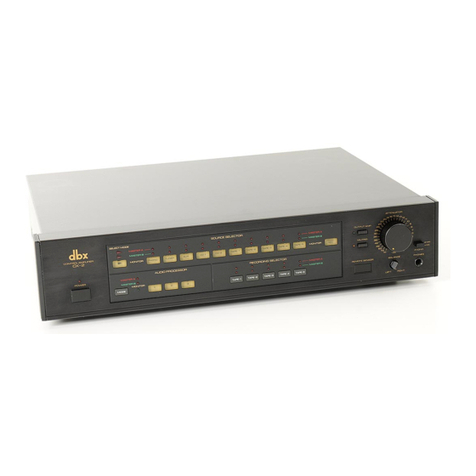
dbx
dbx CX-2 instruction manual
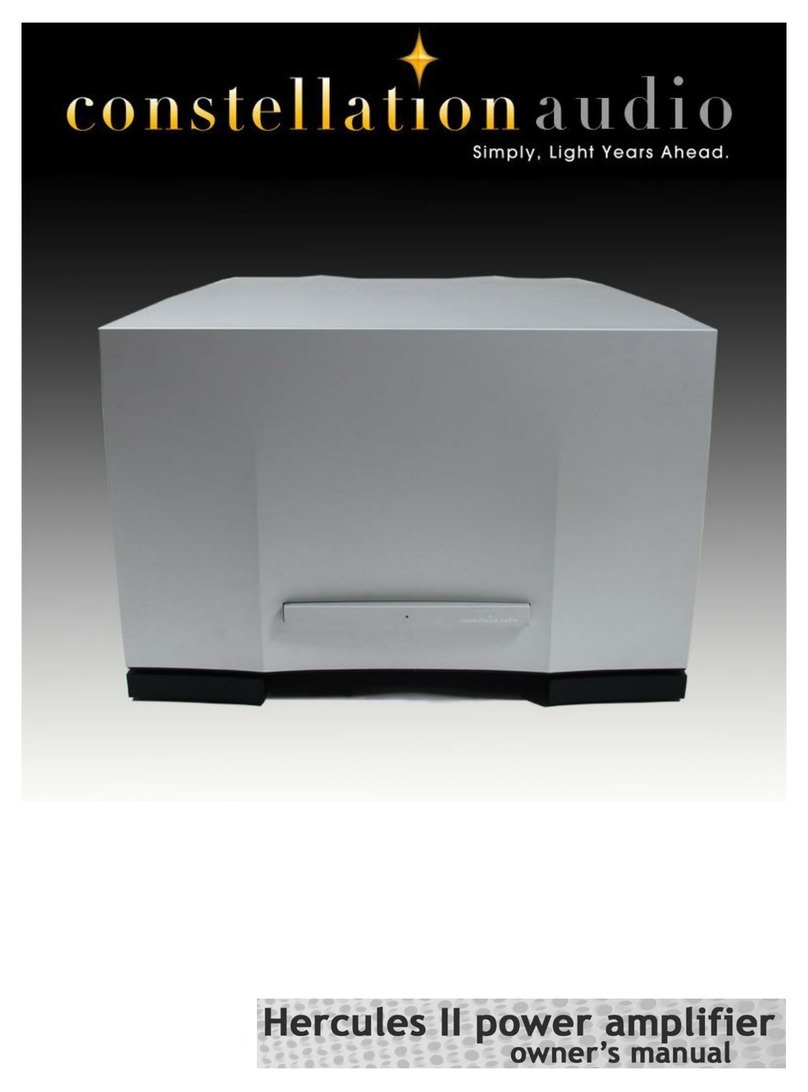
Constellation audio
Constellation audio Hercules II owner's manual
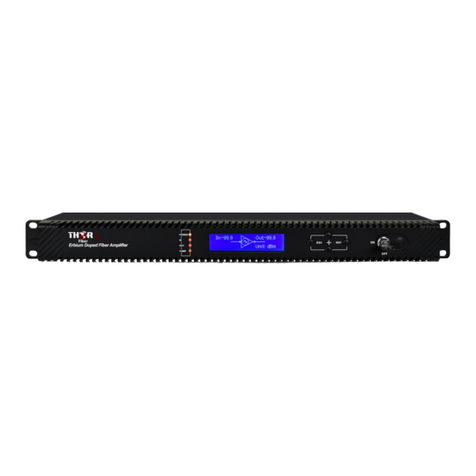
Thor Broadcast
Thor Broadcast F-EDFA Series user manual

ifi
ifi NEO iDSD 2 user manual
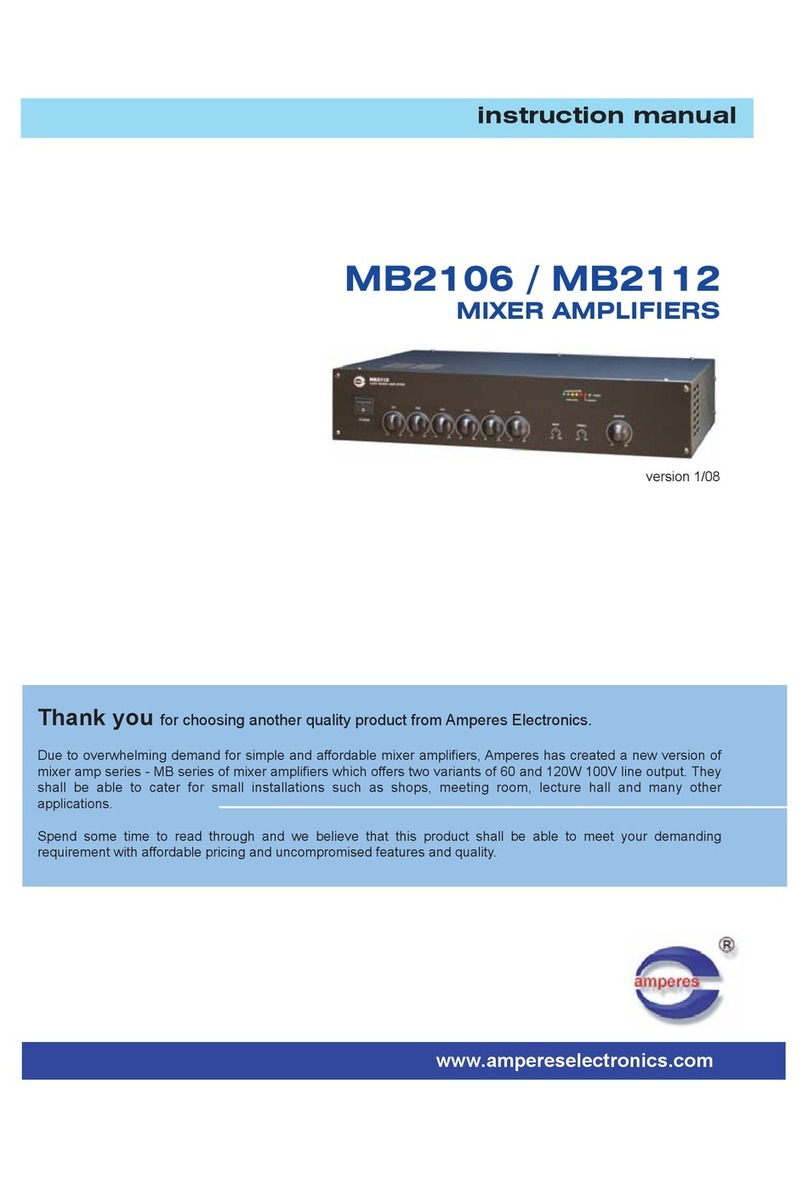
Amperes Electronics
Amperes Electronics MB2106 instruction manual

